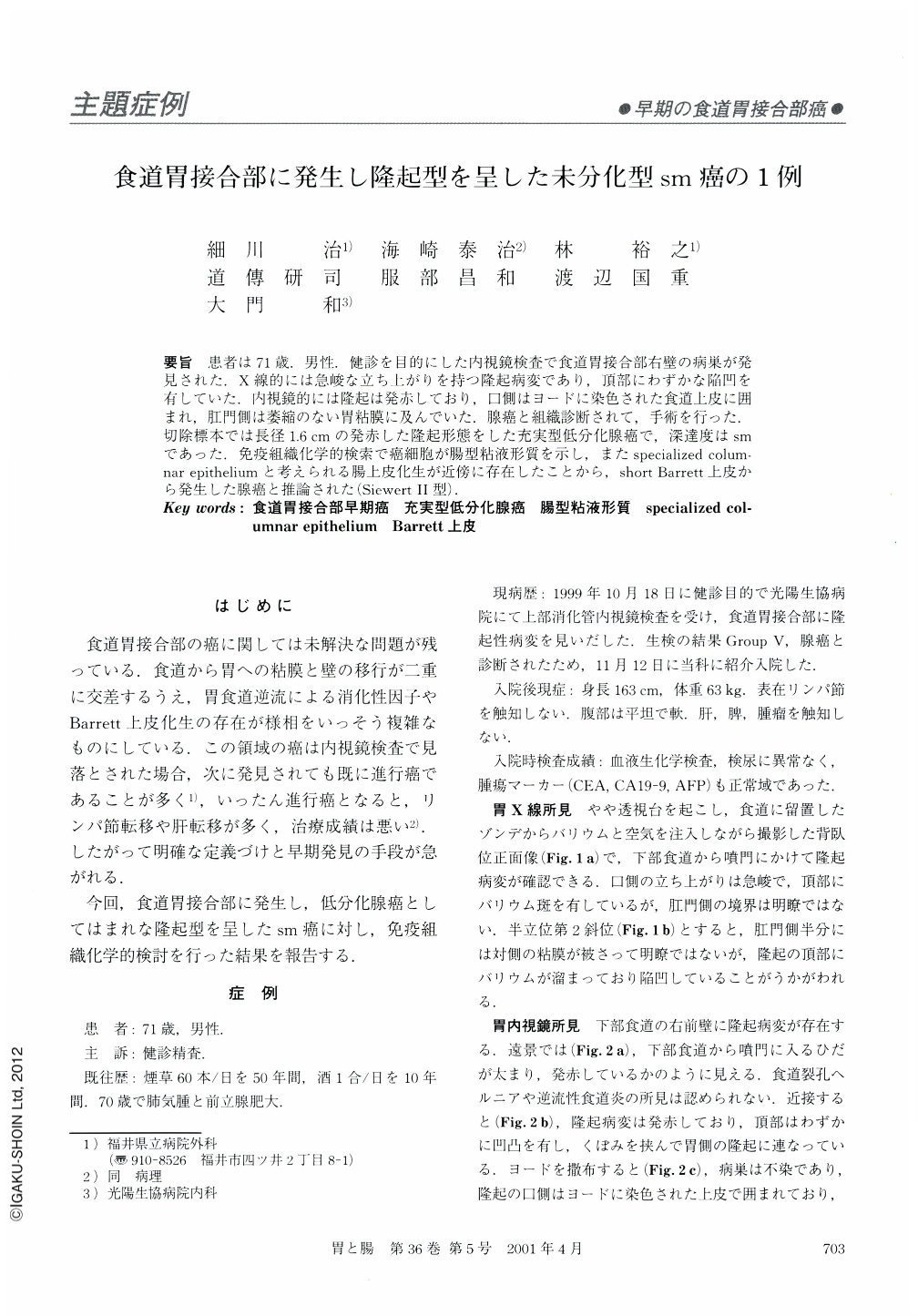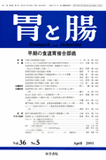Japanese
English
- 有料閲覧
- Abstract 文献概要
- 1ページ目 Look Inside
- サイト内被引用 Cited by
要旨 患者は71歳.男性.健診を目的にした内視鏡検査で食道胃接合部右壁の病巣が発見された.X線的には急峻な立ち上がりを持つ隆起病変であり,頂部にわずかな陥凹を有していた.内視鏡的には隆起は発赤しており,口側はヨードに染色された食道上皮に囲まれ,肛門側は萎縮のない胃粘膜に及んでいた.腺癌と組織診断されて,手術を行った.切除標本では長径1.6cmの発赤した隆起形態をした充実型低分化腺癌で,深達度はsmであった.免疫組織化学的検索で癌細胞が腸型粘液形質を示し,またspecialized columnar epitheliumと考えられる腸上皮化生が近傍に存在したことから,short Barrett上皮から発生した腺癌と推論された(Siewert Ⅱ型).
A 71-year-old man was diagnosed as having a prot-ruding lesion in the esophagogastric junction. X-ray examination showed the lesion with a clear margin and a barium plaque on the surface. Endoscopic examination showed the red lesion was surrounded with esophageal mucosa stained by iodine at the oral side and in contact with the gastric mucosa at the anal side. Since the biopsy specimen obtained from the lesion was positive for adenocarcinoma, the lower esophagus and proximal stomach was resected. Macroscopically the red protruding lesion measured 1.6 cm in diameter. Microscopically, poorly differentiated adenocarcinoma cells solidly invaded the submucosal layer. Immunohistochemical study showed the cancer cell as the intestinal phenotype. The lesion was adjacent to intestinal metaplasia called specialized columnar epithelium. Therefore, we suspect that the lesion had arisen from the short segment with intestinal metaplasia at the esophagogastric junction.

Copyright © 2001, Igaku-Shoin Ltd. All rights reserved.


